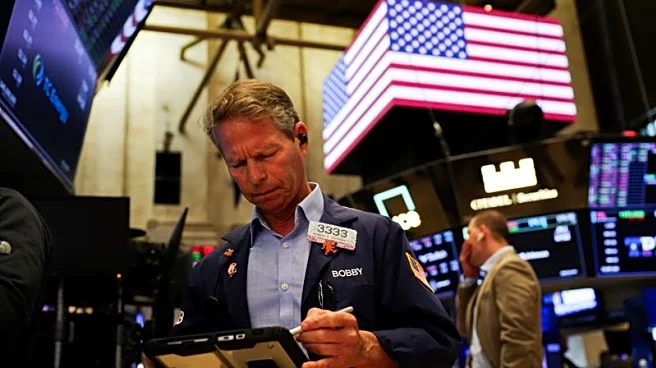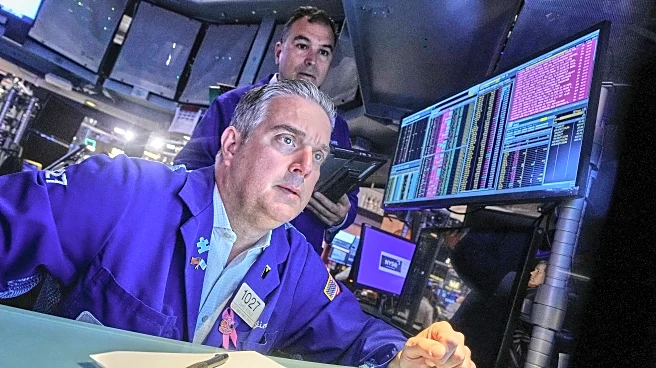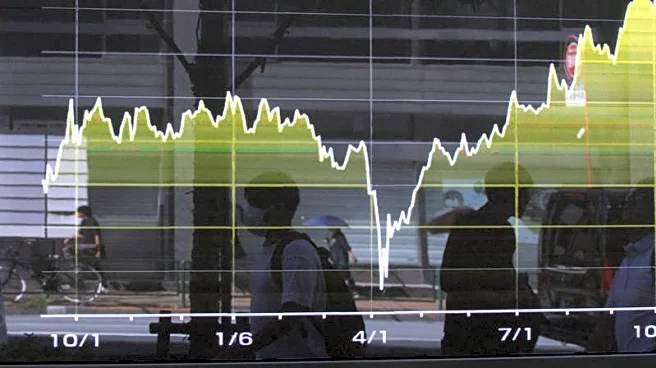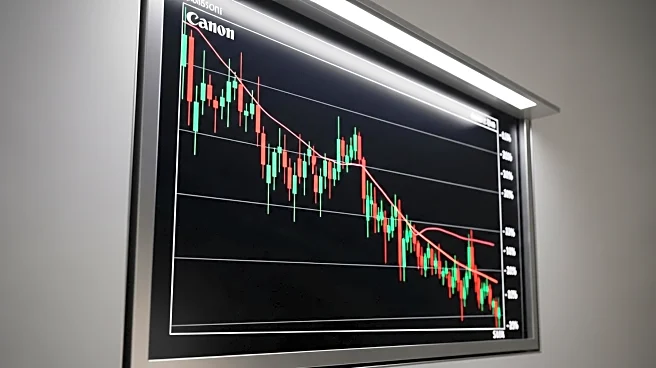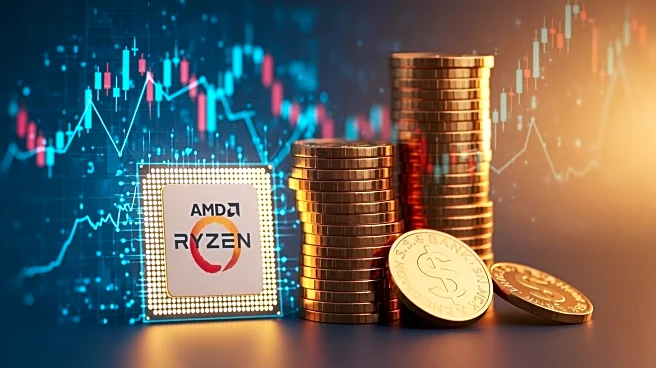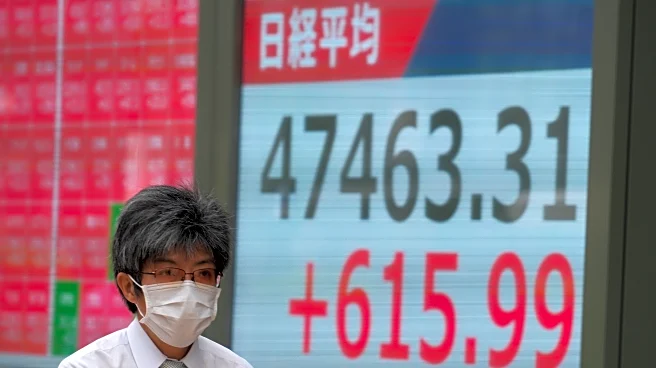What's Happening?
The S&P 500 experienced a volatile session as it retested Friday's low, closing at 6,555 on Tuesday compared to 6,551 on Friday. This movement comes amid ongoing trade tensions between the U.S. and China, which have influenced market dynamics. The market's
recent rally has been driven by investments in AI infrastructure and expectations of Federal Reserve rate cuts. However, unresolved tariff regimes and potential government shutdowns pose risks to the consumer economy. Despite these challenges, the S&P 500 remains near its 50-day moving average, indicating a potential support level. The market's speculative nature, driven by sectors like quantum computing and drone technology, continues to impact its stability.
Why It's Important?
The S&P 500's performance is crucial as it reflects broader economic trends and investor sentiment. The index's ability to maintain its 50-day moving average is vital for sustaining the current bull trend. Trade tensions and macroeconomic factors, such as potential rate cuts by the Federal Reserve, influence market stability. Investors are closely watching these developments, as they could lead to increased volatility and affect investment strategies. The speculative nature of recent market leaders, including AI and technology sectors, highlights the potential for sharp market corrections, impacting both retail and institutional investors.
What's Next?
Market participants are anticipating further developments in U.S.-China trade negotiations, which could significantly impact market sentiment. The Federal Reserve's decisions regarding interest rates and balance sheet adjustments will be closely monitored, as they could influence economic growth and inflation expectations. Additionally, upcoming earnings reports from major banks and corporations will provide insights into the health of the economy and guide investor strategies. The market's ability to navigate these challenges will determine its trajectory in the coming months.
Beyond the Headlines
The current market dynamics underscore the influence of speculative investments and herd psychology on stock prices. The focus on sectors with less tangible fundamentals, such as quantum computing and rare minerals, raises questions about long-term sustainability. This environment creates conditions for potential market shakeouts and erratic price movements, challenging traditional investment approaches. The interplay between macroeconomic factors and speculative trends will continue to shape market behavior.



